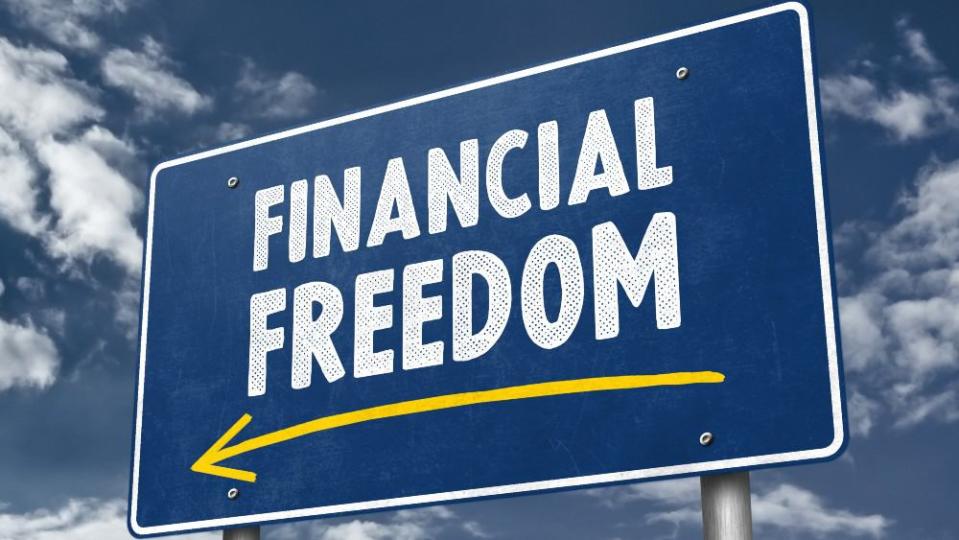A Million-Dollar Retirement: 2 RRSP Stocks to Buy Now

Written by Puja Tayal at The Motley Fool Canada
The pandemic and the looming recession have created an opportunity to build a million-dollar retirement portfolio. When you invest in your retirement, your investment choices change depending on how many years you have left to retire. There is a 100-minus-age rule for asset allocation, but it is not in sync with today’s financial needs. I will discuss asset allocation and identify three stocks to buy in today’s bear market.
The 100-minus-age rule of retirement planning
The rule says you should invest 100 minus your age in equity and the rest in debt and alternative assets. While it is simple, it is not practical, as other factors are at play, such as risk appetite, the economy, and the amount you need at present and after retirement.
For instance, the rule says 40-year-old Mary should invest 60% (100 – 40) in equity and 40% in debt and alternative assets. But if Mary spends 90% of her income to repay a personal loan at 12% and raise two kids, she might have a lower risk appetite. Hence, investing 60% into equity may not be a good asset allocation. Her priority should be to pay off the loan, as no dividend stock can give her a 12% return.
The 100-minus-age rule also ignores the economic situation. For instance, if Mary invested 40% in debt in 2020, when the interest rate was near zero, she would have lost money to inflation. Hence, many debt investors moved to low-risk equity during the pandemic. They are now returning to debt markets, as the central bank hikes interest rate.
A more practical approach is to allocate assets based on the number of years to retire, your risk appetite and the current market scenario. Ensure that you have sufficient after-tax passive income to meet your daily expenses when you retire.
RRSP stock to retire 15 years from now
If you have more than 15 years to retire, you can allocate 70% of your assets to high- and low-risk growth stocks, depending on your risk appetite. I recommend buying stocks that are beneficiaries of secular growth trends like electric vehicles, renewable energy, e-commerce, and 5G. Northland Power (TSX:NPI) is my pick for a growth stock.
U.S. president Joe Biden promotes clean energy and aims to deploy 30 GW of offshore wind by 2030. Europe and the United States have accelerated investments in clean energy to reduce reliance on Russian natural gas.
As the fourth-largest offshore wind operator, Northland Power will be the key beneficiary of government support. The company has natural gas, offshore, and onshore wind projects in Europe, Asia, and the Americas. It has two gigawatts (GW) of wind energy projects operational, 2.9 GW in construction, and 12 GW in the pipeline. The operational projects generate cash flows that support its 3% plus dividend yield.
The United Nations has developed a plan to control global warming at 1.5 degrees Celsius by 2050. To achieve this goal wind energy capacity has to quadruple by 2030. The next 10-15 years could see significant growth in wind energy, driving Northland Power’s stock price and dividend-growth rate. This is a stock that could boost your retirement fund and passive income. Invest through the Registered Retirement Savings Plan (RRSP), as it will allow your investments to grow tax free.
RRSP stock to retire 10 years from now
If you have 10 years before retirement, I would suggest investing in an index ETF like Horizons S&P/TSX 60 Index ETF (TSX:HXT) and BMO Equal Weight Banks Index. The TSX 60 Index re-classifies stocks every quarter and keeps the top 60 stocks by market capitalization.
The index fell almost 10% between April 20 and May 12, creating a buy-the-dip opportunity. The way the index is constructed, it will rebound with the economy, keeping the stocks that performed. It removed Bombardier and BlackBerry from the list in 2020, as the pandemic hit these stocks’ market cap. While this may not give you outstanding growth, it would mitigate your downside risk and keep your returns in sync with the market.
If you have fewer than five years to retirement, increase the exposure of your new investments to debt instruments. Make the most of the market dip to build your million-dollar retirement.
The post A Million-Dollar Retirement: 2 RRSP Stocks to Buy Now appeared first on The Motley Fool Canada.
Should You Invest $1,000 In Horizons Sp Tsx60 Index Etf?
Before you consider Horizons Sp Tsx60 Index Etf, we think you’ll want to hear this.
Our nearly S&P/TSX market doubling Stock Advisor Canada team just released their top 10 starter stocks for 2022 that we believe could be a springboard for any portfolio.
Want to see if Horizons Sp Tsx60 Index Etf made our list? Get started with Stock Advisor Canada today to receive all 10 of our starter stocks, a fully stocked treasure trove of industry reports, two brand-new stock recommendations every month, and much more.
See the 10 Stocks * Returns as of 4/14/22
More reading
Fool contributor Puja Tayal has no position in any of the stocks mentioned. The Motley Fool has no position in any of the stocks mentioned.
2022

 Yahoo Finance
Yahoo Finance 